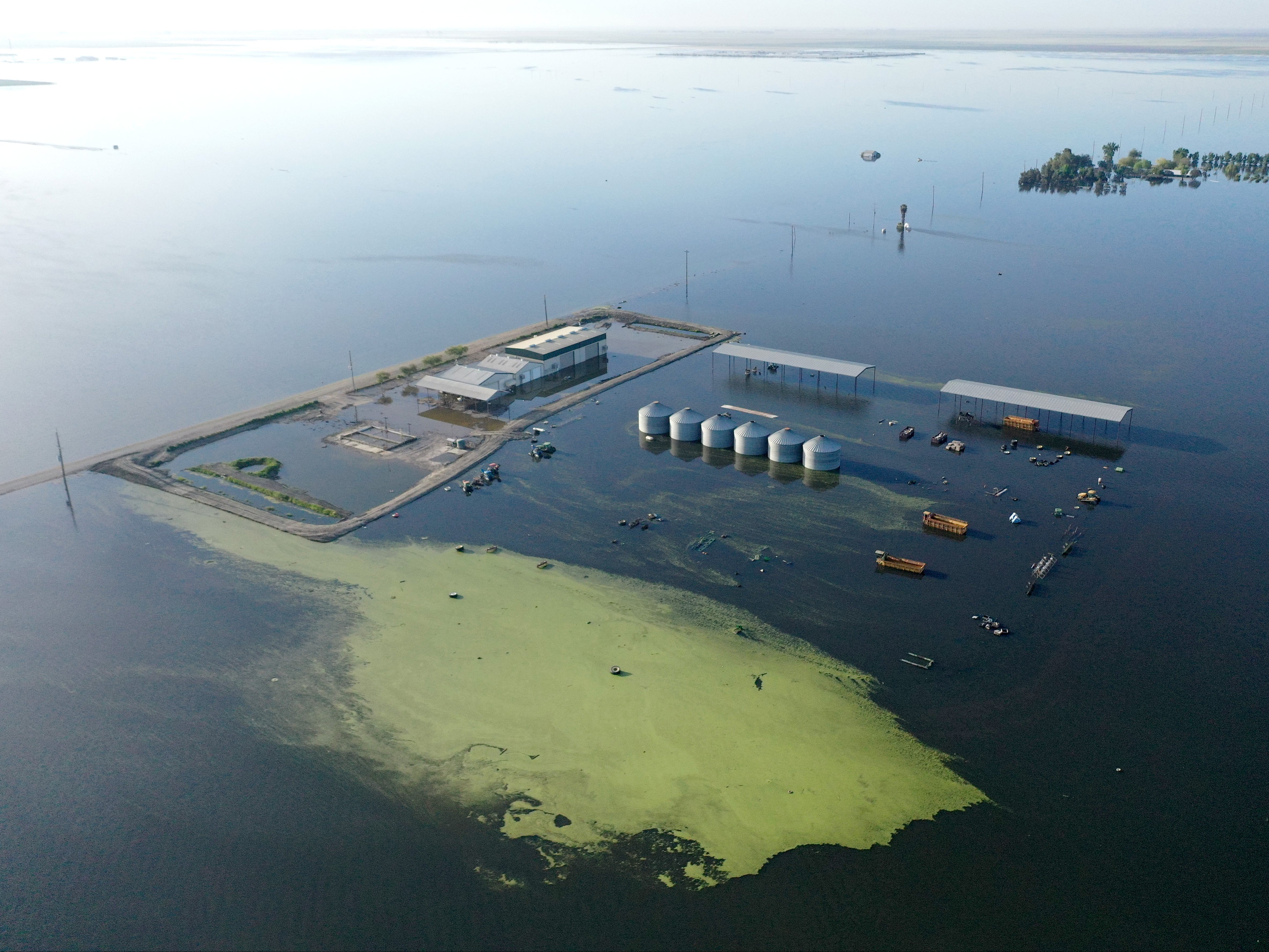Flooding causes California’s ‘ghost lake’ to grow almost as big as Lake Tahoe
The lake is still growing and state water officials expect it to reach its peak in late May or early June
Your support helps us to tell the story
From reproductive rights to climate change to Big Tech, The Independent is on the ground when the story is developing. Whether it's investigating the financials of Elon Musk's pro-Trump PAC or producing our latest documentary, 'The A Word', which shines a light on the American women fighting for reproductive rights, we know how important it is to parse out the facts from the messaging.
At such a critical moment in US history, we need reporters on the ground. Your donation allows us to keep sending journalists to speak to both sides of the story.
The Independent is trusted by Americans across the entire political spectrum. And unlike many other quality news outlets, we choose not to lock Americans out of our reporting and analysis with paywalls. We believe quality journalism should be available to everyone, paid for by those who can afford it.
Your support makes all the difference.California’s especially stormy winter has rejuvenated a long-dead lake.
Tulare Lake, less than an hour's drive from downtown Fresno, was at one point the largest body of freshwater west of the Mississippi.
Settlers and farmers living in the region used its waters for irrigation and for consumption. By the early 1900s, the lake was depleted, leaving behind a dusty bed.
Now, approximately 120 years later, run-off from a series of massive winter storms that hit California is breathing new life into the lake, and expanding it to more than 180 square miles — or approximately the size of Lake Tahoe.
While an influx of water is typically a blessing for the oft drought-plagued state, the enlargement of Tulare Lake has been indiscriminate while clawing back its former dominion, paying no mind to the homes and fields that residents built there in its absence.
Photos from nearby Corcoran and the surrounding basin show the extent of the lake's reclamation; roofs and treetops poking just above the waterline; tractors and cars half-submerged, wheels likely deep in the muddy bed. In some areas, roads simply vanish into the drink.

The visuals of the water's advance will likely only become more shocking, as the lake is still growing. Runoff from snow dumped by the onslaught of atmospheric rivers could expand the lake to as much as 260 square miles, according to the Fresno Bee, citing the California Office of Emergency Services and the state's Department of Water Resources.
Officials at the Department of Water Resources have estimated that by the end of May the water in Tulare Lake will approach or exceed 620,000 acre-feet. By the peak of the lake's growth — likely the end of May or mid-July — officials estimate a 50 per cent chance the lake reaches approximately 700,000 acre-feet, and a 10 per cent chance it expands to 931,000 acre-feet.

An acre-foot equates to 326,000 gallons of water, or enough to cover an entire acre of water in one foot of water. Tulare Lake will likely exceed the water storage capacities of Lake Arrowhead — approximately 228,000 acre-feet — Lake Kaweah and Lake Success, with capacities of 185,000 acre feet and 82,000 acre-feet, respectively.
California is at once dealing with an overabundance of water in some regions and drought in others. State water officials hope the situation at Tulare Lake will provide them a means to use one problem to solve the other by diverting the floodwaters into the California Aqueduct.
“There are multiple concurrent efforts under way … to move water around and ultimately protect communities in the Central Valley,” Brian Ferguson, a spokesperson for the state Office of Emergency Services, told the Fresno Bee. “We are in significantly better shape than we were several weeks ago. We … are not forecasting nearly as severe damage as perhaps we were several weeks ago.”
He noted that just because mitigation efforts were in the works does not mean that the expansion of Tulare Lake will free of danger for those in the region.
“While perhaps the most serious risk may have been averted, we don’t know what we don’t know yet in terms of how fast the water comes down the mountain, what levee may have squirrels in it that we’re not aware of or a million other things that we don’t necessarily control as human beings,” he said.




Join our commenting forum
Join thought-provoking conversations, follow other Independent readers and see their replies
Comments